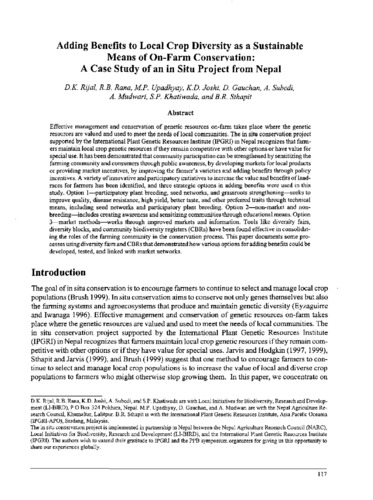Farmer participatory research in soil management and varietal selection in Thailand
Abstract
A pilot project on the use of Farmer Participatory Research (FPR) methodologies with the objective of enhancing farmer adoption of practices that minimize soil erosion in cassava-based cropping systems, was conducted jointly by DOA and DOAE with technical and financial support from CIAT in two sites in Nakhon Ratchasima and Sra Kaew provinces. The activities involved a preliminary survey using RRA methodologies, the setting out of demonstration plots, as well as farmers meetings and farmers field trips to observe the demonstration plots. The activities also included conducting various types of FPR trials with farmers on their own land and organizing a farmer's field day to harvest these trials, to discuss the results, and to select the best treatments for next-year's trials.
The results revealed that the highest yield of cassava in Soeng Saang district of Nakhorn Ratchasima province was obtained from planting contour barriers of vetiver grass within cassava plots; this practice also resulted in the lowest level of soil erosion. On the contrary, in Wang Nam Yen district of Sra Kaew province, the highest cassava yield was obtained in plots with upand-down ridging, while the lowest level of soil erosion was observed with contour ridging. However, from the discussion between participating farmers and FPR team members it was concluded that the planting of contour barriers of vetiver grass was the most effective method to reduce erosion in the long-term, even though this treatment neither had produced the highest yield of cassava nor the highest income.
Within the same pilot project, FPR trials on cassava varieties and on rates of fertilizer application were conducted in order to motivate farmers to participate m the project. In Wang Nam Yen district, Rayong 90 had the highest yield and ranked second in starch content, while Rayong S had the second highest yield but the highest starch content. In Soeng Saang district, Rayong 90 ranked first in yield and starch content, while Kasetsart 50 ranked second in both yield and starch content. With respect to the fertilizer trials, it was found that in Soeng Saang district the application of 156 kg/ha of 15-15-15 resulted in both the highest yield of cassava and highest net income.

